Ben de Lacy Costello
Evolving Spiking Networks with Variable Resistive Memories
May 17, 2015Abstract:Neuromorphic computing is a brainlike information processing paradigm that requires adaptive learning mechanisms. A spiking neuro-evolutionary system is used for this purpose; plastic resistive memories are implemented as synapses in spiking neural networks. The evolutionary design process exploits parameter self-adaptation and allows the topology and synaptic weights to be evolved for each network in an autonomous manner. Variable resistive memories are the focus of this research; each synapse has its own conductance profile which modifies the plastic behaviour of the device and may be altered during evolution. These variable resistive networks are evaluated on a noisy robotic dynamic-reward scenario against two static resistive memories and a system containing standard connections only. Results indicate that the extra behavioural degrees of freedom available to the networks incorporating variable resistive memories enable them to outperform the comparative synapse types.
* 27 pages
Is Spiking Logic the Route to Memristor-Based Computers?
Feb 17, 2014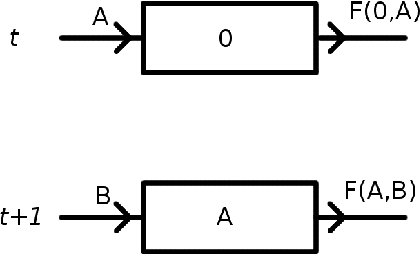
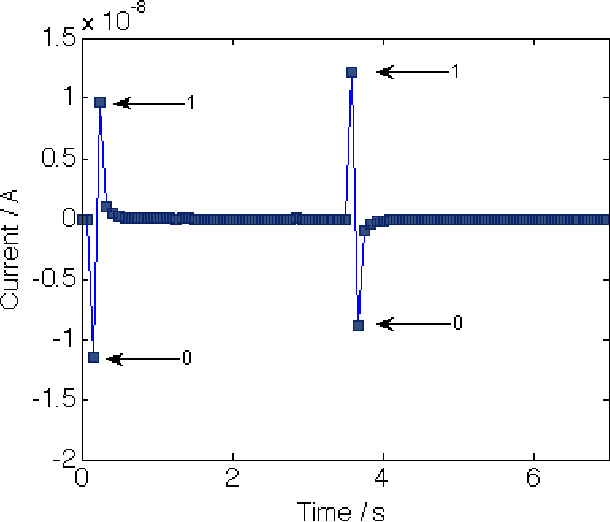
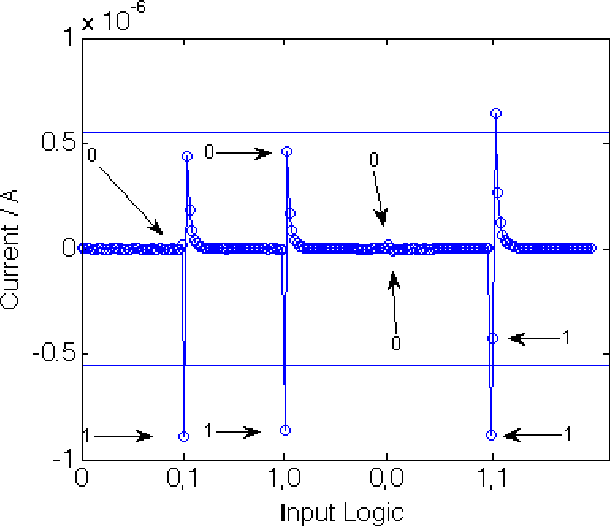
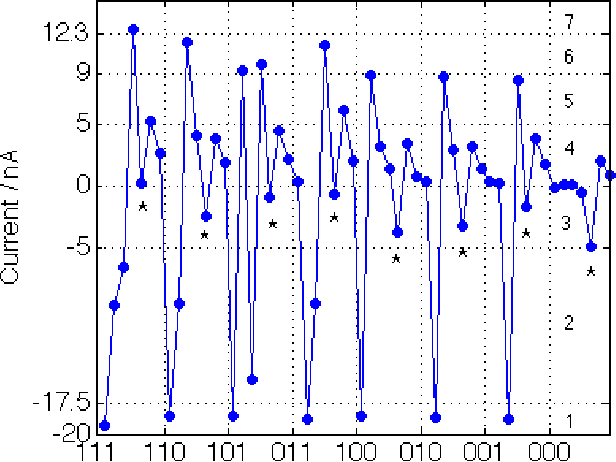
Abstract:Memristors have been suggested as a novel route to neuromorphic computing based on the similarity between neurons (synapses and ion pumps) and memristors. The D.C. action of the memristor is a current spike, which we think will be fruitful for building memristor computers. In this paper, we introduce 4 different logical assignations to implement sequential logic in the memristor and introduce the physical rules, summation, `bounce-back', directionality and `diminishing returns', elucidated from our investigations. We then demonstrate how memristor sequential logic works by instantiating a NOT gate, an AND gate and a Full Adder with a single memristor. The Full Adder makes use of the memristor's memory to add three binary values together and outputs the value, the carry digit and even the order they were input in.
* Conference paper. Work also reported in US patent: `Logic device and method of performing a logical operation', patent application no. 14/089,191 (November 25, 2013)
Does the D.C. Response of Memristors Allow Robotic Short-Term Memory and a Possible Route to Artificial Time Perception?
Feb 17, 2014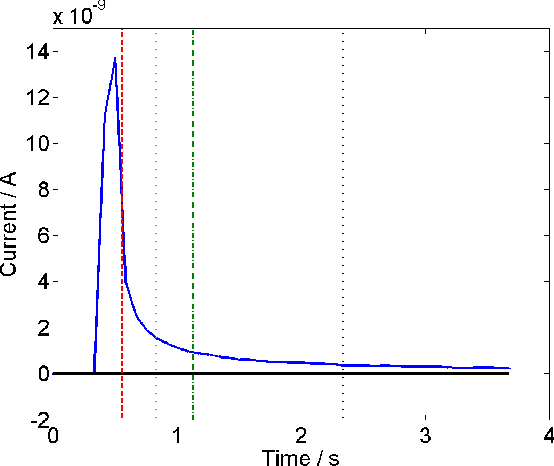
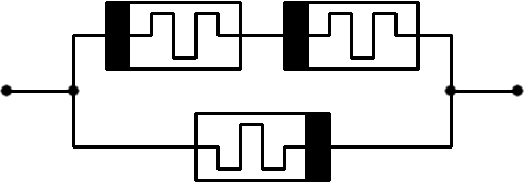
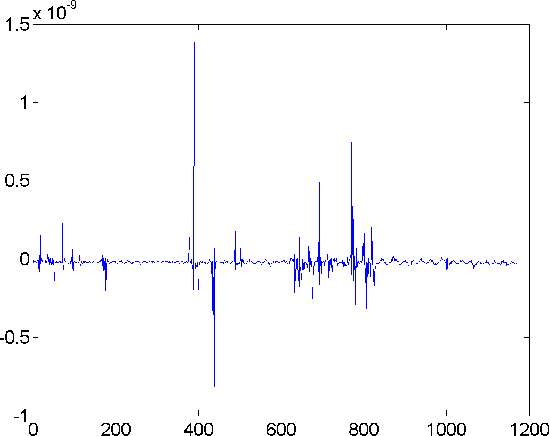
Abstract:Time perception is essential for task switching, and in the mammalian brain appears alongside other processes. Memristors are electronic components used as synapses and as models for neurons. The d.c. response of memristors can be considered as a type of short-term memory. Interactions of the memristor d.c. response within networks of memristors leads to the emergence of oscillatory dynamics and intermittent spike trains, which are similar to neural dynamics. Based on this data, the structure of a memristor network control for a robot as it undergoes task switching is discussed and it is suggested that these emergent network dynamics could improve the performance of role switching and learning in an artificial intelligence and perhaps create artificial time perception.
* 3 page position paper
Design of a Hybrid Robot Control System using Memristor-Model and Ant-Inspired Based Information Transfer Protocols
Feb 17, 2014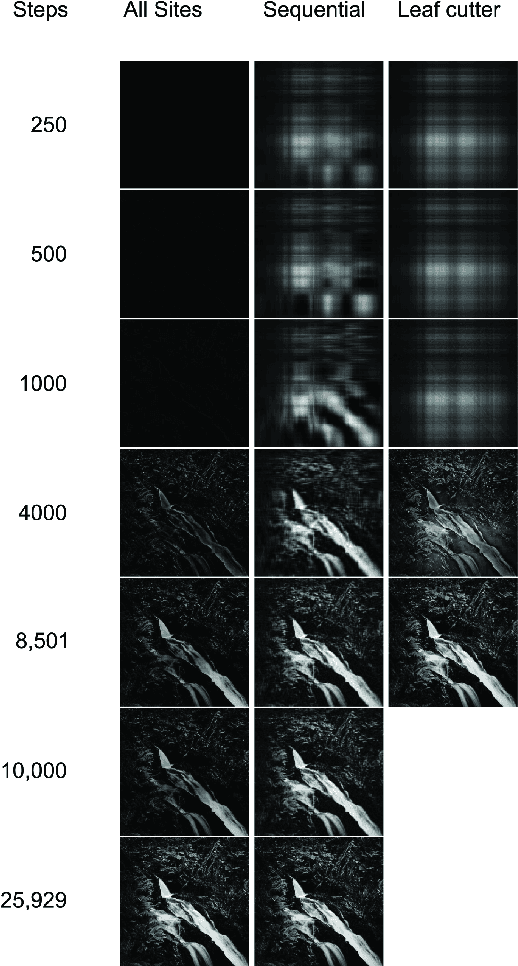
Abstract:It is not always possible for a robot to process all the information from its sensors in a timely manner and thus quick and yet valid approximations of the robot's situation are needed. Here we design hybrid control for a robot within this limit using algorithms inspired by ant worker placement behaviour and based on memristor-based non-linearity.
* Conference
Comparison of Ant-Inspired Gatherer Allocation Approaches using Memristor-Based Environmental Models
Feb 04, 2013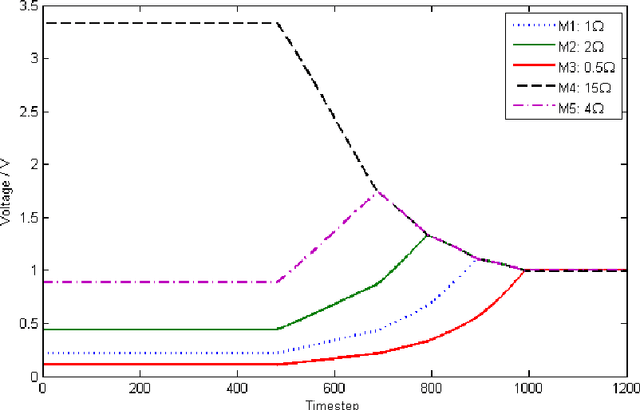
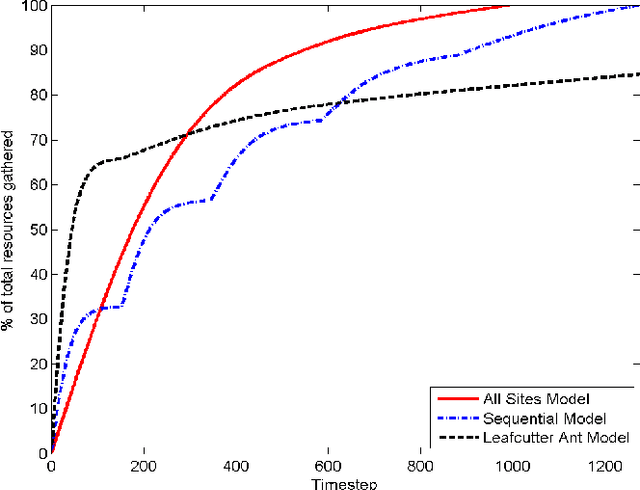
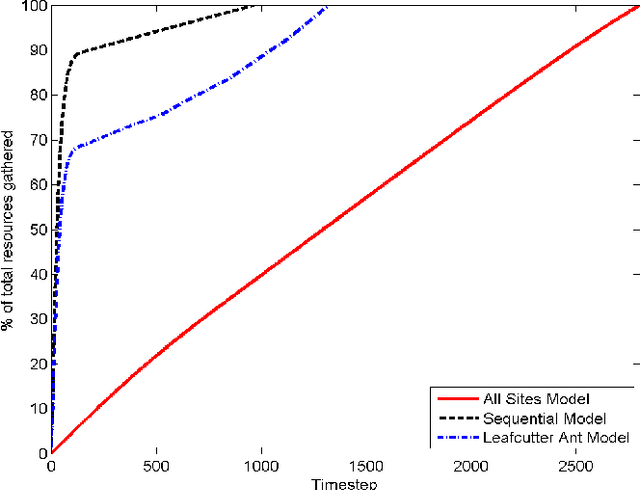
Abstract:Memristors are used to compare three gathering techniques in an already-mapped environment where resource locations are known. The All Site model, which apportions gatherers based on the modeled memristance of that path, proves to be good at increasing overall efficiency and decreasing time to fully deplete an environment, however it only works well when the resources are of similar quality. The Leaf Cutter method, based on Leaf Cutter Ant behaviour, assigns all gatherers first to the best resource, and once depleted, uses the All Site model to spread them out amongst the rest. The Leaf Cutter model is better at increasing resource influx in the short-term and vastly out-performs the All Site model in a more varied environments. It is demonstrated that memristor based abstractions of gatherer models provide potential methods for both the comparison and implementation of agent controls.
* 11 pages, 3 figures, conference paper
Beyond Markov Chains, Towards Adaptive Memristor Network-based Music Generation
Feb 04, 2013



Abstract:We undertook a study of the use of a memristor network for music generation, making use of the memristor's memory to go beyond the Markov hypothesis. Seed transition matrices are created and populated using memristor equations, and which are shown to generate musical melodies and change in style over time as a result of feedback into the transition matrix. The spiking properties of simple memristor networks are demonstrated and discussed with reference to applications of music making. The limitations of simulating composing memristor networks in von Neumann hardware is discussed and a hardware solution based on physical memristor properties is presented.
Evolution of Plastic Learning in Spiking Networks via Memristive Connections
Dec 14, 2012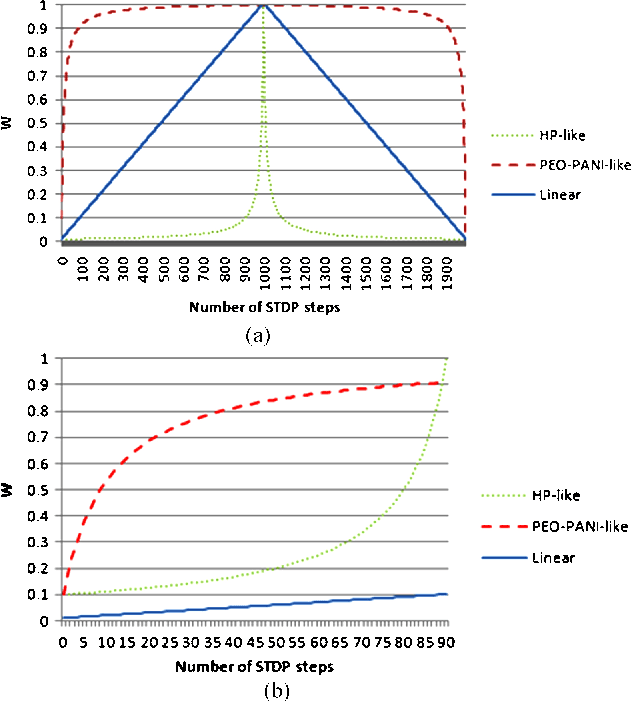
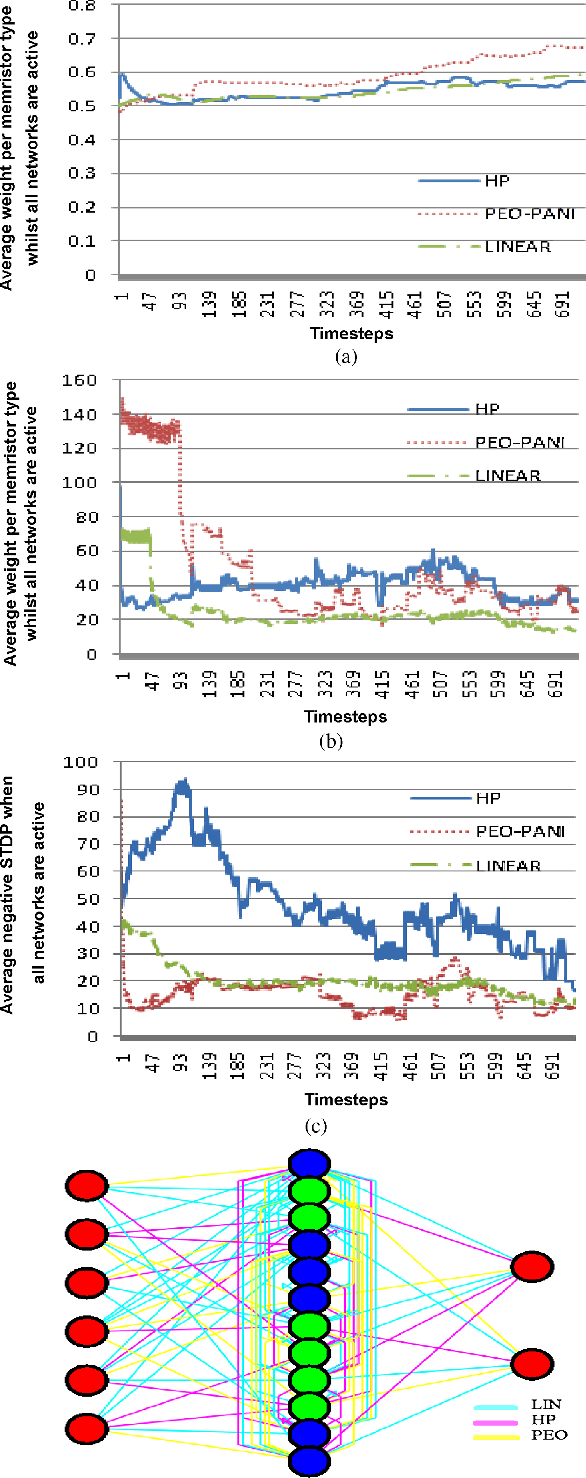
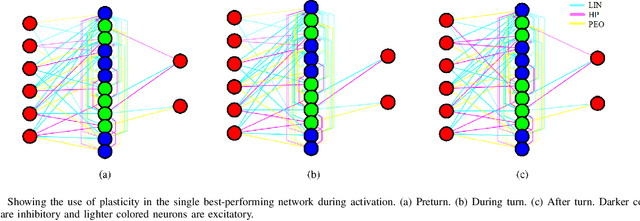
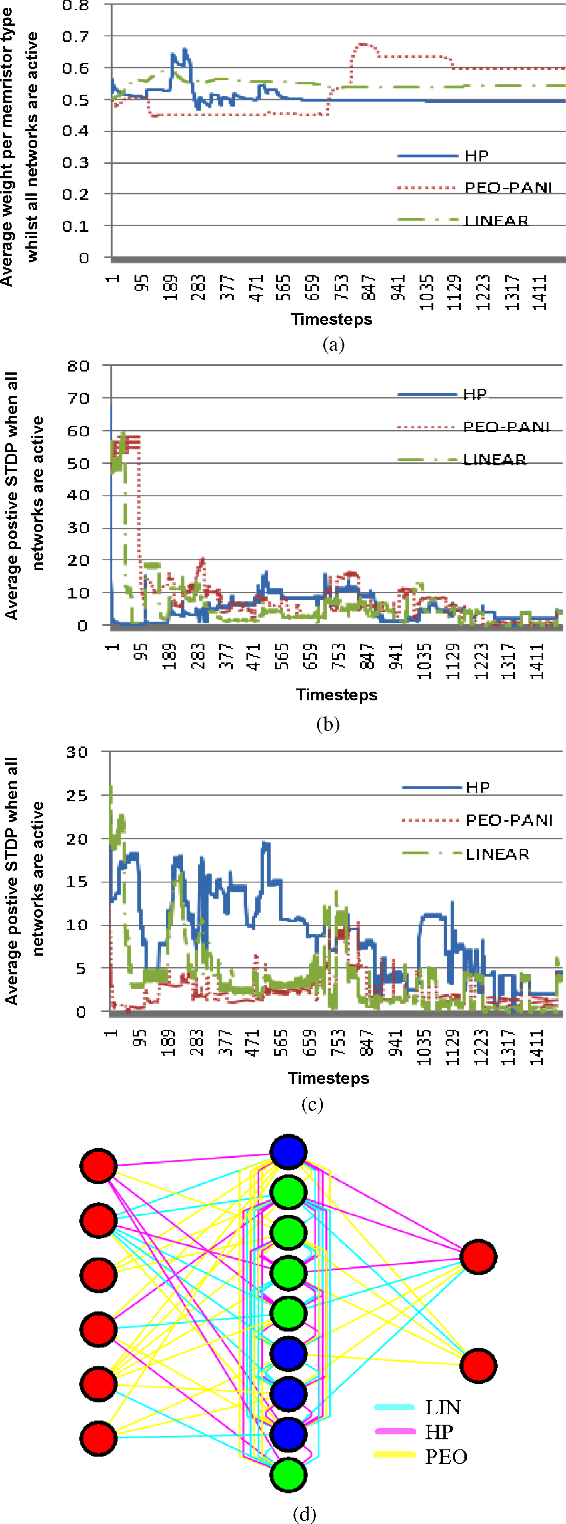
Abstract:This article presents a spiking neuroevolutionary system which implements memristors as plastic connections, i.e. whose weights can vary during a trial. The evolutionary design process exploits parameter self-adaptation and variable topologies, allowing the number of neurons, connection weights, and inter-neural connectivity pattern to emerge. By comparing two phenomenological real-world memristor implementations with networks comprised of (i) linear resistors (ii) constant-valued connections, we demonstrate that this approach allows the evolution of networks of appropriate complexity to emerge whilst exploiting the memristive properties of the connections to reduce learning time. We extend this approach to allow for heterogeneous mixtures of memristors within the networks; our approach provides an in-depth analysis of network structure. Our networks are evaluated on simulated robotic navigation tasks; results demonstrate that memristive plasticity enables higher performance than constant-weighted connections in both static and dynamic reward scenarios, and that mixtures of memristive elements provide performance advantages when compared to homogeneous memristive networks.
Time-dependent wave selection for information processing in excitable media
Apr 24, 2012



Abstract:We demonstrate an improved technique for implementing logic circuits in light-sensitive chemical excitable media. The technique makes use of the constant-speed propagation of waves along defined channels in an excitable medium based on the Belousov-Zhabotinsky reaction, along with the mutual annihilation of colliding waves. What distinguishes this work from previous work in this area is that regions where channels meet at a junction can periodically alternate between permitting the propagation of waves and blocking them. These valve-like areas are used to select waves based on the length of time that it takes waves to propagate from one valve to another. In an experimental implementation, the channels which make up the circuit layout are projected by a digital projector connected to a computer. Excitable channels are projected as dark areas, unexcitable regions as light areas. Valves alternate between dark and light: every valve has the same period and phase, with a 50% duty cycle. This scheme can be used to make logic gates based on combinations of OR and AND-NOT operations, with few geometrical constraints. Because there are few geometrical constraints, compact circuits can be implemented. Experimental results from an implementation of a 4-bit input, 2-bit output integer square root circuit are given. This is the most complex logic circuit that has been implemented in BZ excitable media to date.
 Add to Chrome
Add to Chrome Add to Firefox
Add to Firefox Add to Edge
Add to Edge